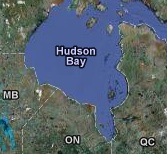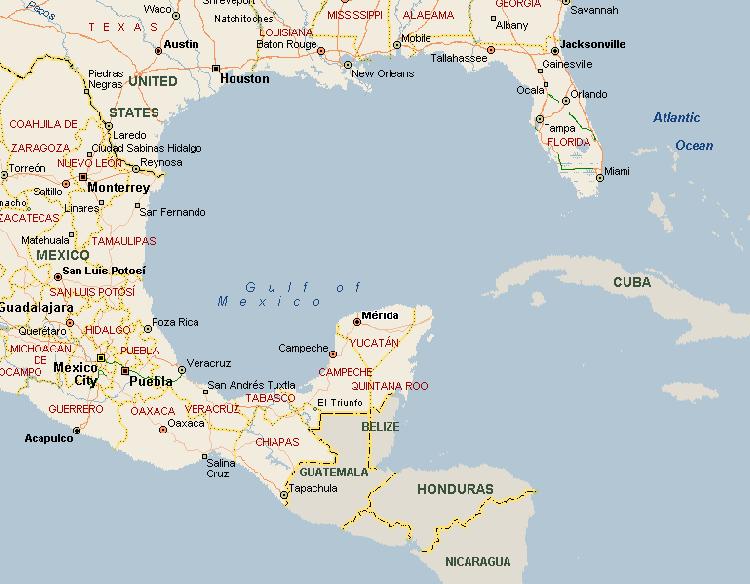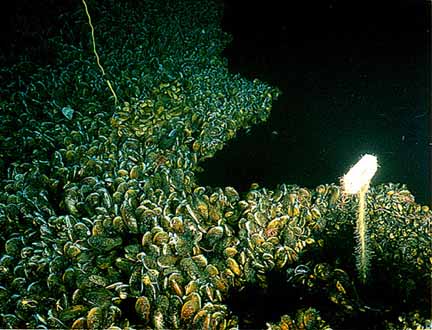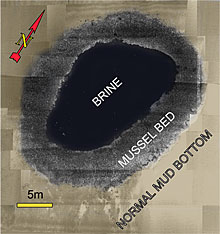- Roughly the size of Alaska, the Gulf of Mexico is the 9th largest body of water on Earth. It is approximately half the size of the Mediterranean Sea and twice the size of the Hudson Bay.
- The Gulf of Mexico is about 1000 miles (1600 km) across from east to west. From north to south, it stretches about 550 miles (900 km).
- The Gulf of Mexico is bordered by the states of Florida, Alabama, Mississippi, Louisiana, and Texas to the north. It is bordered by Mexico to the west, and by Cuba to the southeast.
- The Gulf of Mexico is linked to the Atlantic by the Florida Strait and connected to the Caribbean Sea by the Yucatan Channel.
- Water enters the Gulf through the Yucatan Strait, circulates through the Loop Current, and exits through the Florida Strait. The mass of water exiting the Gulf of Mexico eventually forms the Gulf Stream.
- The Gulf receives water from over 150 rivers and runoff from 31 of the 50 United States, making it a focal point for water quality research and enhancement efforts.
- The Gulf’s average depth is about 5000 feet – relatively shallow in comparison to the open ocean, which has an average depth of 12,500 feet.
- Characterized by a large intertidal zone (an area exposed to air during low tide and covered by water during high tide) and a gently sloping continental shelf (the border of a continent that slopes gradually into the ocean), over sixty percent of the Gulf of Mexico is less than 600 feet deep.
- Although most of the Gulf is shallow, the Sigsbee Deep, a trough which dips 12,000 feet deep and spans 300 miles, is in the southwest portion of the Gulf.
- On the Gulf floor, scientists recently discovered brine pools – small lakes on the bottom of the ocean with distinct surface and shorelines. So far, scientists have only identified brine in the Gulf of Mexico and on the Antarctic Shelf.
- Brine pools have extremely high salt concentrations. The excess salinity makes the water in a brine pool sink, preventing it from mixing the surrounding water.
- From a distance, brine pools appear to have a beach around them. Closer examination, however, reveals that they are surrounded by thousands of methane-consuming mussels.
- The Gulf of Mexico has a very small tidal range in comparison to most coastal areas. This means that the vertical distance between high and low tide is smaller than in other parts of the world.
- Due to the abnormal shape of its basin, the Gulf of Mexico experiences irregular tidal cycles. The Gulf of Mexico shoreline sometimes experiences two low tides and two high tides every day, and sometimes it experiences only one high tide and one low tide in a day.
- The Gulf of Mexico provides many valuable natural resources (naturally occurring materials that are valuable to people and/ or wildlife).
- The Gulf is home to many species of fish. Fish caught commercially in the Gulf of Mexico accounts for about 25% of the total US catch. These fish are worth approximately $900 million each year.
- The Gulf of Mexico seafloor also contains valuable crude oil and natural gas reserves.
- The Port of Southern Louisiana and the Port of Houston, located on the Gulf of Mexico, are the largest ports in the US, and are among the top 10 busiest ports in the world. In addition, 70% of Mexican shipping occurs via the Gulf of Mexico.
Review Questions
Where does the Gulf of Mexico rank in size when compared to other large bodies of water?
What is the average depth of the Gulf? How does it compare to the open ocean? What is the deepest part of the Gulf called and how deep is it?
What is a brine pool and why to they exist on the sea floor?
Name three important industries in the Gulf of Mexico.
Glossary
Brine Pool: Small, salty lakes on the bottom of the ocean with distinct surface and shorelines
Continental Shelf: The border of a continent that slopes gradually into the ocean.
Crude Oil: A mixture of naturally occurring hydrocarbons that is found deep underground and is generated naturally from decaying plant and animal matter over millions of years; crude oil is refined into products like diesel, gasoline, and plastics.
Intertidal Zone: The area that is underwater at high tide and exposed to air during low tide.
Natural Gas: A fossil fuel in the gaseous state; often used for cooking and heating homes.
Natural Resources: Naturally occurring materials that are valuable to people and/ or wildlife.
Sigsbee Deep: A deep trough over 12,000 feet deep and 300 miles long in the southwest part of the Gulf.
Tidal Range: The vertical distance between the high and low tide each day.








